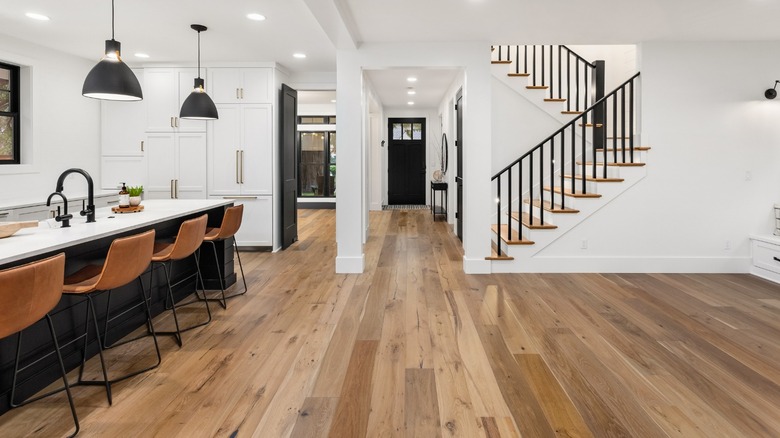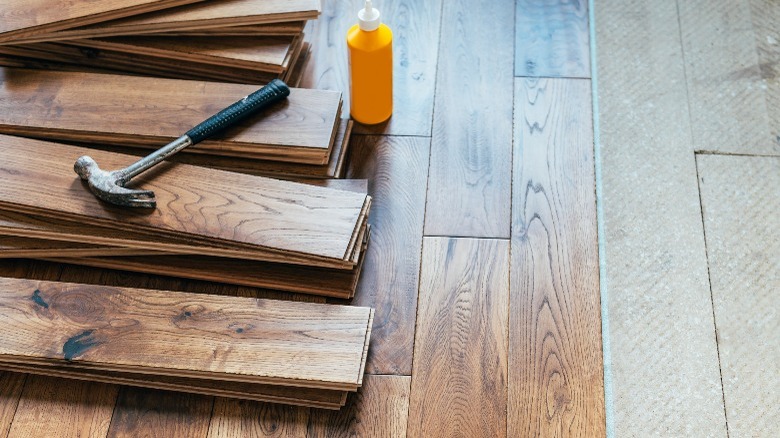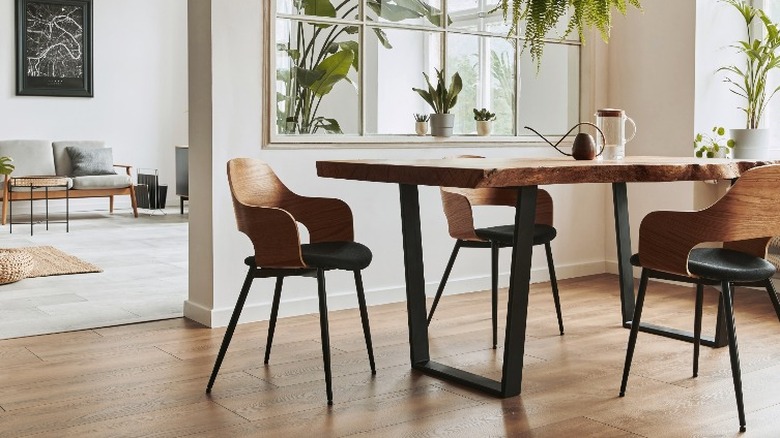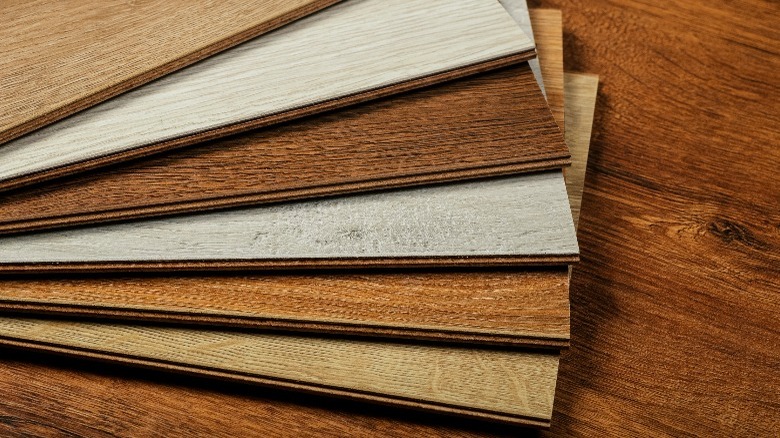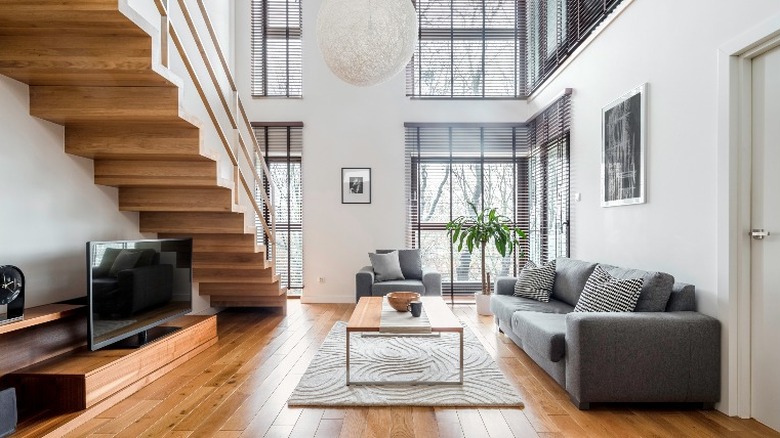How Much Does It Cost To Put In Wood Flooring?
Wooden floors are highly durable and add character and warmth to a home. Once installed, they are relatively easy to look after, and since wood is a natural product, it is also an eco-friendly alternative to tiled or carpeted floors.
However, as Ambient Hardwood Flooring mentioned, installing a wood floor is somewhat more costly than other types of coverings, and prices can vary significantly depending on the type of wood you choose, the shape and size of your room and the condition and material of the existing subfloor.
According to Home Advisor, hardwood costs on average around $6 to $12 per square foot, while typical installation costs for a 500-foot solid wood floor range from $2,500 to in excess of $6,500, including labor. In addition, there are several fundamental aspects that can affect this price, so if you want to know the true cost of installing a wood floor, then read on.
Factors for cost
There are two main price points to consider when budgeting for a wood floor, which are the cost of the wood and the cost of the labor. However, these aspects are also dependent on several other factors.
The type of wood you choose for your new floor will depend on where you want to install it and the look you are trying to achieve. HomeGuide noted that softwood is usually the cheapest at around $2 to $4 per square foot. However, exotic hardwoods such as Brazilian walnut are much more expensive at $12 to $22. Engineered hardwood ranges from $5 to $13 per square foot, depending on quality and thickness.
You'll need subfloor material, and the type you choose will determine the installation procedure. Wooden subfloors are generally easier than concrete to install a wood floor over as the planks can be nailed directly to the subfloor. Fixr noted concrete floors can be more expensive and time-consuming. Additional materials are often necessary to ensure the new floor doesn't absorb moisture, and special adhesives are needed to glue it down.
Depending on where in your home you want to install wood flooring, there are several factors to consider. In high traffic areas, such as kitchens and entranceways, harder woods such as oak or maple are better, whereas a bedroom or office may be a good location for softwoods such as pine. Carlisle Wide Plank Floors recommended using engineered wood in a basement rather than hardwood, as basements usually have higher levels of moisture and humidity.
While you could opt to lay the new floor yourself, for true peace of mind, Bob Vila recommended finding a contractor who understands the correct installation techniques, has experience with varying humidity and temperature levels, and will guarantee the work. In general, expect to pay anywhere from $3 to $12 per square foot for a professional installation. In addition, remember to factor in the cost of removing the existing floor, which can also be time-consuming and costly, according to Home Advisor.
Additional costs
When calculating your budget, it is also imperative to consider the additional services and materials that are needed, as these make up a significant amount of the total cost.
Before installing a wood floor, it is imperative to fully check the subfloor's condition. Any signs of mold, rot, dampness, or insect damage must be fully addressed. Angi noted that replacing the joists or floorboards will incur an additional $40 to $60 per square foot, while treatment and leveling of concrete floors costs an average of $6 per square foot.
As mentioned, the method of installing new flooring can vary depending on the type of subfloor and the type of wood chosen. In addition, HomeServe pointed out that other contributing factors such as the room's shape, how many doorways there are, if an underlayment is necessary, and accommodating features such as fireplaces or closets will all affect the total labor price, as will complex layouts like herringbone or parquet.
To complete the installation, you will likely need some additional materials. Using a high-quality underlayment adds a layer of moisture protection, helps with soundproofing, provides support, and smooths out imperfections in the subfloor, according to From the Forest. Underlayment prices can range from $0.25 to $1 a square foot. Additionally, you will need to factor in transition strips for joining to other types of flooring in doorways and moldings around the outer edges of the walls.
There are two primary choices when choosing the type of wood: prefinished and unfinished. The Spruce noted that prefinished wood typically comes with a UV-cured polyurethane coating and is generally more expensive. However, it is quite easy to damage during installation. Unfinished boards can be treated with your choice of polyurethane, oil, or wax once the floor is completed and generally adds $2 to $5 per square foot for materials and labor.
Types of wood flooring
There are many styles of wood to choose from, each having its own unique price, color, grain, and level of durability.
Hardwood is the most popular choice for floors, and for good reason. Remodeling Expense highlighted that hardwood planks are exceptionally durable and a great choice for high-traffic areas like kitchens. Hardwoods are available in a whole range of colors to suit your taste and decor. For example, ash and maple have a white or light tan coloring that works well in modern homes, whereas oak, hickory, and walnut are much darker and help create a rustic or vintage style.
Softwood is by far the cheapest option; however, as its name implies, it is far less durable than hardwood. But this doesn't mean it should be ruled out completely. As Bob Vila pointed out, softwoods are more environmentally friendly than slow-growing hardwoods. When sealed and finished correctly, they can be an excellent choice for rooms with modest activity, such as an attic or bedroom. Additionally, softwood has a more rugged appearance that may lend itself better to a classic or antique aesthetic.
Engineered wood is a modern alternative to hardwood and is made from several layers of plywood with a thin layer of real hardwood bonded to the surface. It is generally cheaper to install and has several advantages, said The Spruce. It is almost always sold prefinished and has better resistance to heat and moisture, making it ideal for use in basements or humid locations.
Parquet refers more to the installation method than the type of wood. Natural Wood Floor described parquet as wooden blocks that are laid in intricate geometric patterns such as herringbone, chevron, or basket-weave. Due to the high level of craftsmanship needed to lay a parquet floor, installation costs are often very high. However, the result will be a unique and bold floor that particularly suits period home restorations.
Why you need new wood flooring
While it's true that wood flooring isn't cheap, it is an investment that will bring character to your home and elevate your living space. In addition, there are some other solid arguments for installing a new wood floor.
One of the main advantages of installing wood flooring is the increased value and saleability it adds to your home. Simpleshowing suggested that hardwood floors may increase a home's value by as much as 3% to 5%, while SBV Wood Floors noted that 82% of real estate agents agree that homes with wood flooring sell faster than those without.
Unfortunately, nothing lasts forever. Whatever kind of floor you have, be it wood, carpet, or tile, it will eventually deteriorate and look worn out. If you currently have wood flooring, Bob Vila pointed out several signs that it is ready to be replaced, including excessive creaking, which can also indicate underlying structural problems, warping or signs of rot, which is often caused by water damage, or serious scratches or gouges that sanding cannot remove.
Benefits of wood flooring
If you are still on the fence when deciding if you really want wood flooring, then there are several additional factors worthy of consideration.
One of the primary benefits of wood flooring is its unique and beautiful appearance. Hardwood floors have a timeless look that complements any kind of style and decor. They bring coziness and elegance to a room that no other flooring type can touch, said Forbes. In addition, many homeowners believe that wood flooring can make your space look bigger and more inviting.
Not only does wood flooring look great, but it is also very comfortable to walk on. Wood is far less affected by ambient room temperatures than tile, vinyl, or laminate flooring. According to Build With Ferguson, hardwood floors can also improve the acoustics in a room. Wood reduces hollow sounds and vibrations, which is why you find hardwood floors in dance and music studios. In addition, wood floors are a good choice for allergy sufferers because, unlike carpets, they don't trap dust, pollen, animal dander, or other common allergens, which improves air quality throughout the home.
One of the best things about wooden floors is that when installed correctly they generally require little upkeep. Regular sweeping and mopping are usually sufficient. In addition, 50 Floor noted that hardwood floors can be sanded down and refinished a number of times, giving them a lifespan of anywhere from 30 to 100 years, depending on the quality of the wood and the thickness of the boards.
